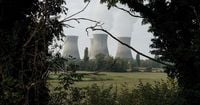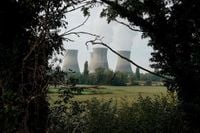In a decision that has sent ripples through the environmental and financial sectors, the European Union’s General Court ruled this week that nuclear energy and natural gas can be classified as environmentally sustainable investments under the bloc’s green finance taxonomy. The verdict, delivered in Luxembourg on September 11, 2025, marks a pivotal moment in Europe’s ongoing debate over the definition of “green” and the future of the continent’s energy transition.
The case landed before the court after Austria, a staunch opponent of nuclear power, sued the European Commission. Austria argued that including nuclear and gas in the EU’s sustainable investment list amounted to “greenwashing” technologies that are, in their view, harmful to the climate and public safety. Luxembourg joined Austria in the legal challenge, while a coalition of nine countries—including France, Finland, and Poland—backed the Commission’s position.
The EU’s sustainable finance taxonomy, established in 2020, was designed to steer investments towards activities that help mitigate or adapt to climate change. The classification system is a cornerstone of the EU’s broader ambition to become climate-neutral by 2050—meaning the bloc’s greenhouse gas emissions would be balanced by removals from the atmosphere. In 2022, the European Commission controversially expanded the taxonomy to include certain nuclear and fossil gas activities as “transitional” steps, acknowledging the varied energy mixes and starting points of member states.
Austria’s then-environment minister, Leonore Gewessler, filed the lawsuit in 2022, contending that the regulation “opened the door to the greenwashing of climate-harming and dangerous technologies.” Austria, notably, has no operational nuclear power plants and has long championed renewables such as solar and wind. Luxembourg echoed Austria’s concerns, while the Commission’s supporters argued that nuclear and gas are necessary to bridge the gap until renewables can be scaled up sufficiently.
The court’s ruling, as reported by The Associated Press and Euractiv, found that the Commission “did not exceed its authority” by including nuclear and gas in the taxonomy. The judges stated, “The Commission was entitled to take the view that nuclear energy generation has near to zero greenhouse gas emissions.” The court further noted that “alternative low-carbon energy sources were not available at sufficient scale” to fully replace nuclear and gas at this stage of the energy transition. In other words, the court acknowledged the practical realities facing Europe’s energy sector—renewables are growing, but not yet at the level needed for a complete transition.
For supporters of the Commission’s approach, the ruling is a green light for increased private investment in nuclear and gas projects across the continent. The Brussels-based trade association nucleareurope welcomed the outcome, arguing that being included in the taxonomy “can help encourage private investments in nuclear projects.” According to the Commission, European companies are already using the classification system to plan hundreds of billions of euros in green investments.
But not everyone is celebrating. Leonore Gewessler, now the parliamentary leader of Austria’s Greens, was quick to condemn the decision. She warned, “This ruling sends a disastrous signal to the entire EU. If this decision stands, it undermines a fundamental principle: where it says green, it is no longer truly green. Those seeking green investments may end up supporting nuclear power or dirty gas.” Gewessler has called on the Austrian government to appeal the ruling to the EU’s highest court, the European Court of Justice, arguing that “an enormous amount of funding is at stake, which should go into safe renewables, not into risky and costly reactors.”
Critics of the decision, including some members of the European Parliament, have argued that the inclusion of nuclear and gas in the taxonomy lacks a “solid scientific basis.” Markus Ferber, a German MEP from the centre-right European People’s Party, said, “The decision to include gas and nuclear energy in the taxonomy never had a solid scientific basis. It is regrettable that the ECJ did not find the strength to correct such an obvious misjudgement.”
The debate over nuclear energy’s role in the green transition is as old as the technology itself. On one hand, nuclear power plants emit virtually no greenhouse gases during operation, making them attractive to countries seeking to decarbonize their electricity grids. On the other, the mining and processing of uranium fuel is energy-intensive and produces emissions, and the reactors themselves generate radioactive waste that must be managed for centuries. Accidents, though rare, can have catastrophic consequences—Chernobyl and Fukushima remain cautionary tales for many Europeans.
Natural gas, meanwhile, emits significantly less carbon dioxide than coal when burned for electricity. Yet, it remains a fossil fuel, contributing to global warming. The court’s ruling acknowledges these complexities, emphasizing that nuclear and gas can contribute “substantially to climate change mitigation and adaptation under certain conditions.”
For Austria and its allies, the fight is far from over. The government has signaled its intention to appeal, and environmental groups across Europe are likely to keep the pressure on policymakers to prioritize renewables. The ruling is a setback for Austria’s anti-nuclear stance, but it also reflects the EU’s pragmatic approach to achieving its climate goals in a world where energy security and affordability remain pressing concerns.
This decision doesn’t exist in a vacuum. As Responsible Investor noted, the EU court’s ruling is part of a broader landscape of sustainable finance developments, including recent moves in the United States and New Zealand to adjust climate risk oversight and reporting requirements. The outcome of Austria’s potential appeal, and the ongoing debate over what truly counts as “green,” will shape the future of sustainable investment not just in Europe, but globally.
For now, the EU’s green finance map includes nuclear and gas as waypoints on the journey to climate neutrality. Whether that route leads to a cleaner, safer, and more sustainable future—or veers off course—remains a question for Europe’s leaders, investors, and citizens to answer in the years ahead.






